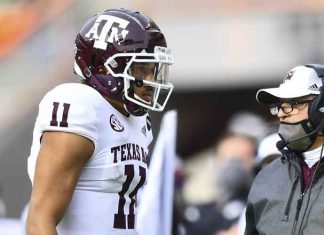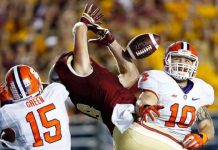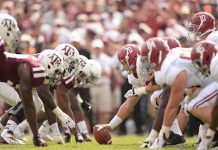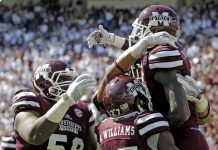(Stats Perform) – In announcing on Wednesday the Big South won’t have fall competition due to the COVID-19 pandemic, commissioner Kyle Kallander thought back to March 12, when student-athletes were pulled off the court during the conference’s women’s basketball tournament.
“I honestly didn’t think we’d be sitting here, five months later,” Kallander said, “doing the same thing with our fall sports.”
The Big South became the 10th of 13 overall conferences in FCS college football to shift its focus toward playing its fall schedule during the spring semester. However, it joined two other conferences, the Colonial Athletic Association and the Missouri Valley Football Conference, in allowing member schools to decide whether they would play nonconference games this fall.
Regardless of any games this fall, the spring could be the most important time for the FCS this academic year, including conferences expecting the NCAA would allow a regular season to lead to playoffs.
For the plans to come to fruition, college football likely needs to be in a different spot five months from now, perhaps with the pandemic under control when teams would be starting practices or be getting ready to do that.
“Obviously, we have to get control of this virus in this country,” Big Sky commissioner Tom Wistrcill said. “We have to make sure we can have contact sports in a safe way. I think a lot will be determined by what happens this fall on campuses. Once all the students come back to campus, how can we manage the spread of the virus at each of our locations?”
“We as a country need to be in a different position by the spring,” CAA commissioner Joe D’Antonio said.
The NCAA surely would allow for fall sports in the spring semester or the governing body would probably be more involved as one conference after another – on all levels – announces its planned move.
Short of a vaccine for coronavirus, the mix of realism and cautious optimism will continue to spread along a fine line. While everybody hopes for the return to college sports, schools have to meet substantial medical protocols, which many would have struggled to do with all their sports programs this fall. It included both COVID-19 testing and getting results back in timely fashion before competition.
Having sports up and running in the spring semester would mean fall teams getting started in the heart of winter, which will be particularly challenging in northern states, and having them collide on campuses for multiple months with winter and spring sports. That will put stress on facilities and staff.
“It’s not ideal, but the unfortunate reality is nothing has been ideal over the last five months.” D’Antonio said.
“I know that the spring brings a whole host of challenges that are going to be very difficult to overcome and there are no guarantees,” Patty Viverito, the commissioner of the MVFC and the Pioneer Football League, told Forum News Service, “but we’ve got a chance.”
FCS commissioners have pledged they’ll continue to work together to make spring football work. Various models and schedules will be considered in the coming months, and the regular season could be conference-only in some leagues.
A key component would be getting the NCAA to establish a date for the national championship game and working backward from there to a playoff bracket and the start of the regular season. James Madison athletic director Jeff Bourne has suggested a model with the championship being played Memorial Day weekend.
25% Bonus via Western Union

















